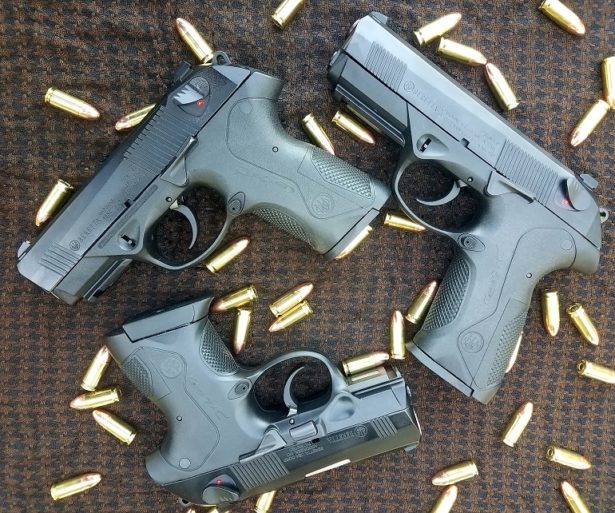
I don’t like the way this gun looks. I don’t like the way this gun feels. But man, I sure do like the way the Beretta PX-4 Storm shoots.
Like a lot of folks, and every single action movie ever, I dig the Beretta 92 series. And like every soldier, I hated it when it was my duty pistol. That was because I didn’t know how to shoot it.
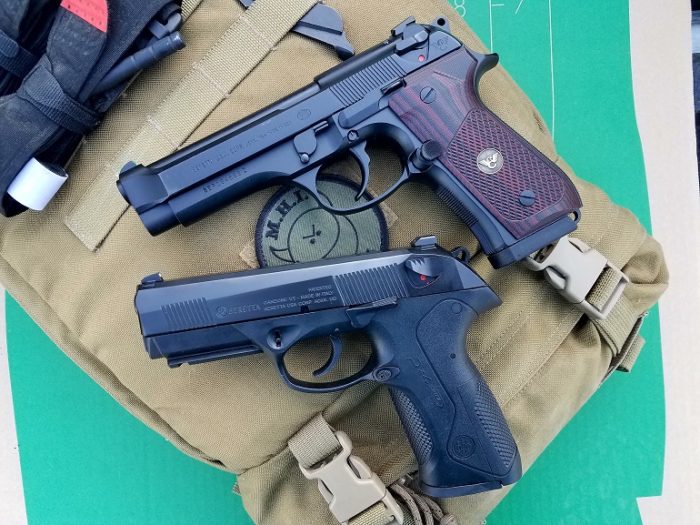
One of the things I had to learn was the two trigger pulls of the double action/single action system, and it was a hard lesson.
Too hard, it seems, for most folks. The DA/SA system faded into relative obscurity behind the 1911 and striker fired pistols. Then, in 2000, Ernest Langdon crushed the USPSA Production Division National Championship. Not with a 1911 (heresy!), but a DA/SA pistol. Almost two decades later, we see DA/SA systems making a comeback, and everything old is new again.
There are plenty of tried and true DA/SA guns out there. The SIG SAUER P226 and P229s are still going strong. The Beretta 92s of all varieties are selling better than they have in more than a decade. But here are also some newer players making DA/SA guns using steel slides and polymer lowers. A great example is FN’s excellent FNX series.
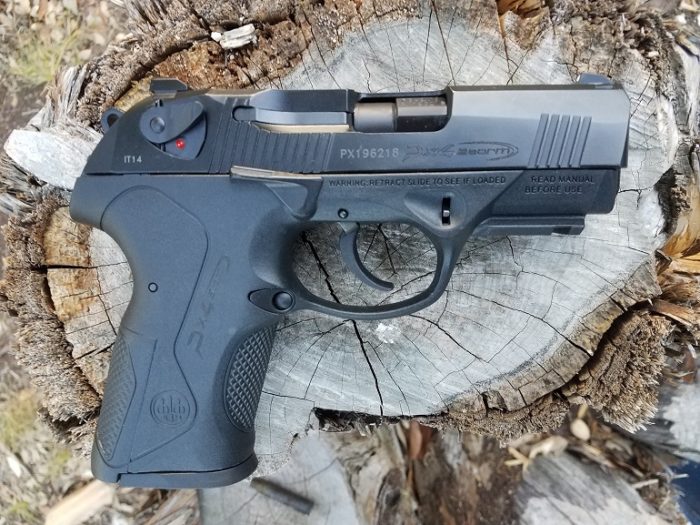
But the company that made the pistol John McClane counted on has quietly been making and improving what is one of the best, if not the best DA/SA gun on the market. That gun is the Beretta PX4-Storm.
Beretta makes several different versions of the PX-4 Storm, and TTAG was able to get all three sizes. I decided to review them all at once and put them in a bit of a head-to-head competition against each other.
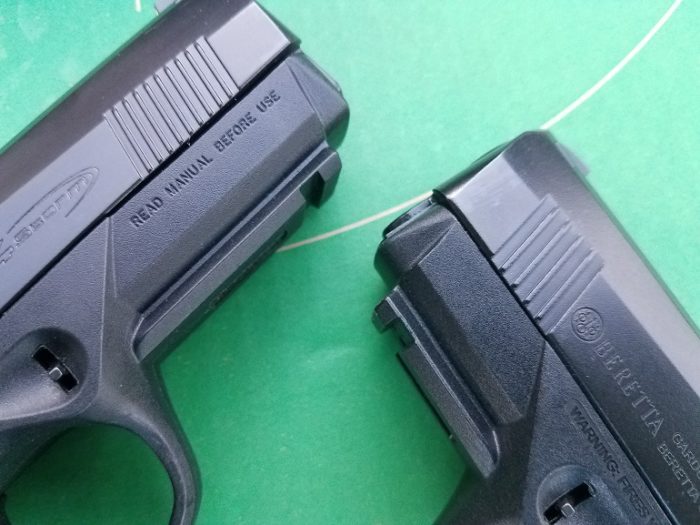
One of the more interesting features of the PX4-Storm series is its rotating barrel design. Unlike the vast majority of pistols on the market, the PX-4 Storm Full Size and Compact models eschew the venerable cam lock Browning action and instead goes with the rotary barrel action. I first saw this action in use a couple of years ago on the Grand Power X-Calibur. The only other gun around now that I can find it on is the Beretta Cougar.
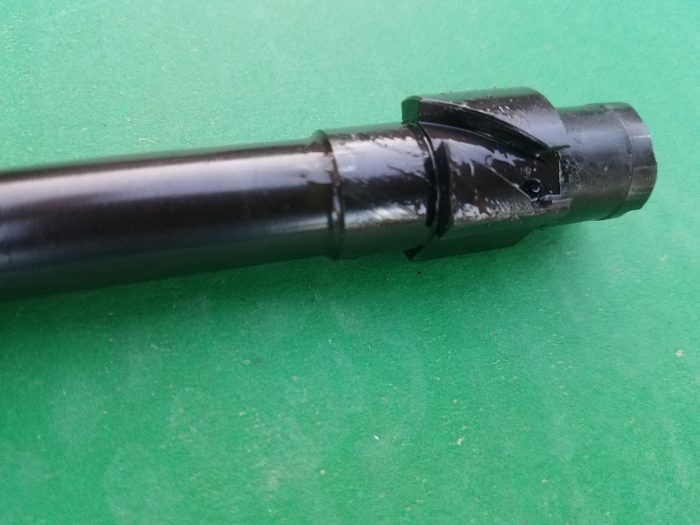
In theory, some of the recoil energy is dispersed in the rotating motion of the barrel, and that should translate to a more in-line feel of recoil and reduced muzzle flip, at least in comparison to tilt-barrel actions. In theory. In practice, it allows the firearm to have an ever so slightly lower bore axis, which definitely translates to less muzzle rise.
Maybe it works, because this gun is a fast shooter. The lack of muzzle rise on the full-size version was expected, but the same can be said for the sub-compact model as well, which has the more typical Browning action. Every version of this gun humms along, and I could keep a good view of the front sight through the entire recoil cycle.
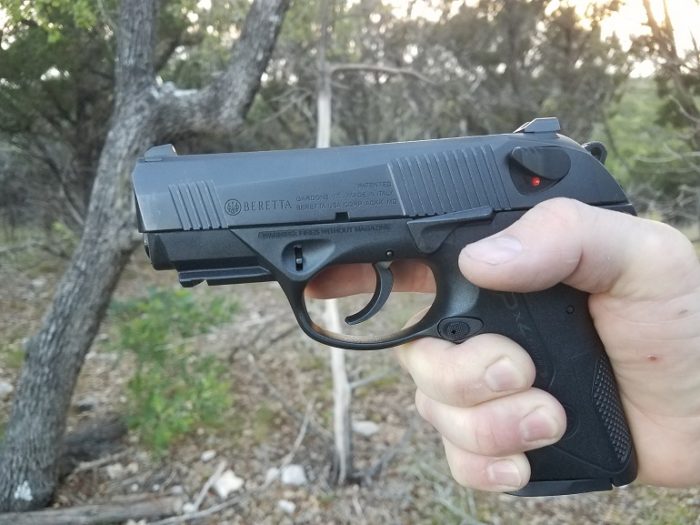
That heavy slide has to be a big part of it. It works, but man, it ain’t pretty. With all of the features of this pistol — the options, the price, and how it performs — the PX4 Storm should be a lot more common. I think that big slide may have something to do with it, because to my eyes, it’s just plain ugly.
It’s not the finish. No, the proprietary Bruniton coating is a non-glare black, even throughout. There are no tool marks or rough spots anywhere on this gun. It’s a Beretta, so I wouldn’t expect there to be.
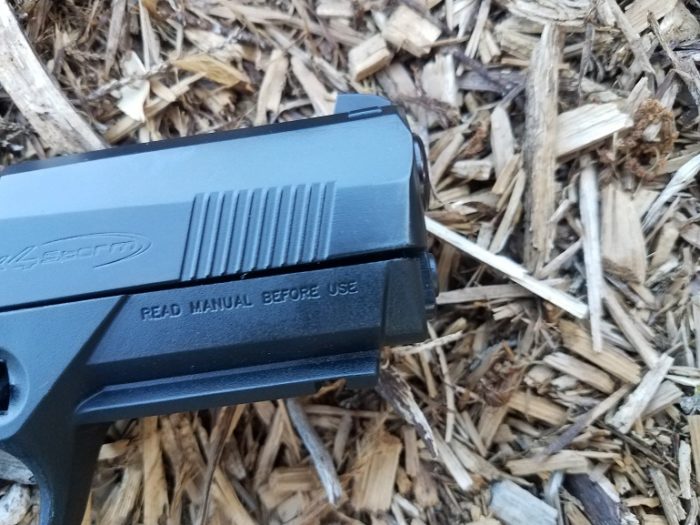
But there’s that giant slide on top of that small frame. It gives the gun a sawed-off pit bull look. It makes the pistol look a lot like…dare a say it? I dare.
This Beretta might remind you of a High Point.
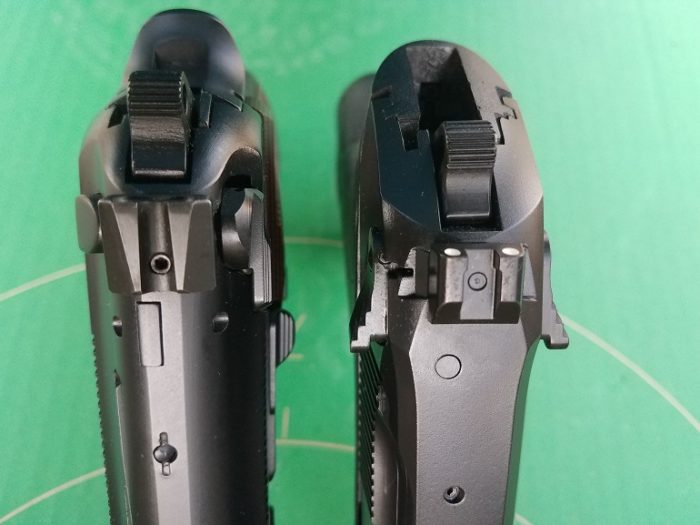
Beretta PX4 Storm (R) next to a Beretta 92 (L)
To top it off, literally, those wing-like ambidextrous safeties make the otherwise reasonably thin slide too wide. Take a look at the compact model. It’s similar is size to the GLOCK 19. But on the specifications, the Beretta is much wider. That’s solely due to the width of the safeties. The slide width of both guns are almost identical.
The entire top of the PX4 Sorm’s slide is flat. I like a flat top slide, and I feel that it drives my eyes right to the sights. Unfortunately, it also adds to the blocky appearance of this pistol.
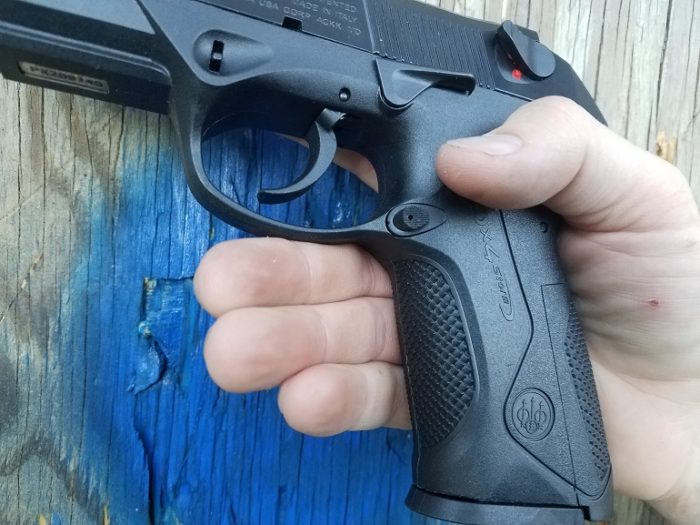
The grip on all three models looks a little strange, and it feels a little strange. Compared to that massive metal slide on the 92, that polymer frame hosts a fairly diminutive handle. The grip is narrow, and looks like it juts straight down from the frame. In fact, it’s angled back and does swell a bit at the palm.
Unlike the 92 series, this gun fits small and medium sized hands very well. In fact, if you have large hands you’re likely going to find the grip doesn’t quite fill your mitts, and the length of pull is going to be on the short side.
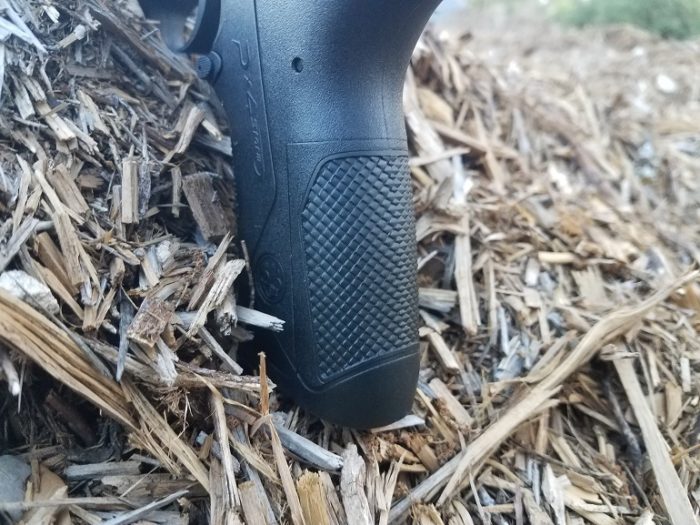
Beretta addresses this by including a set of backstraps with the pistol, all three sizes. Replacing the backstrap is easy with just a bar pull in the magazine well. It’s definitely worth the short amount time it takes to find the right one for you. Note that the backstraps aren’t really thicker, they effectively just add width to the back of the grip, increasing the length of pull. If you were looking for the same feeling the 92 series in your hand, this isn’t the pistol you are looking for.

That said, the front and back straps are well textured, and all three sizes have plenty of space for three fingers under the gun. Wait, all three you say? Even the subcompact?
Yup, and here’s a little bit of Italian design genius I haven’t seen on other pistols. On the standard Sub Compact’s magazine, the bottom of the magazine base pad has a little ledge. No big deal, many magazines do. This one, however, is hinged. As you grip the pistol and apply pressure with your fingers, the base pad hinges down, giving your pinky that tiny bit of extra room for a solid grip.
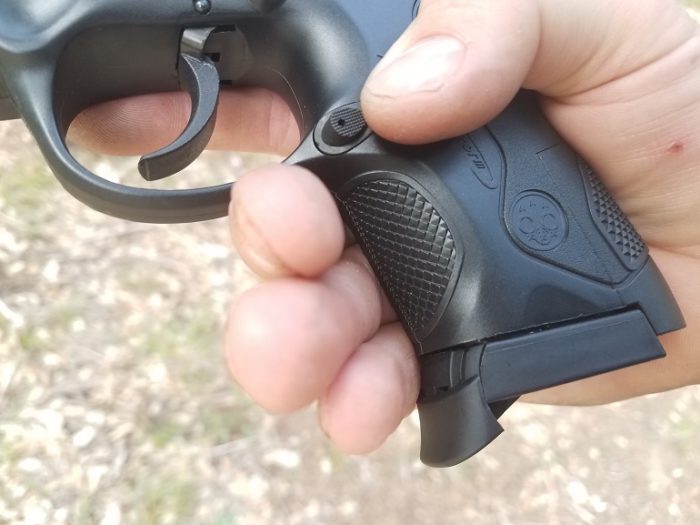
I didn’t see it at first, and I thought something was wrong with the gun. Upon inspection I realized what was happening, and after getting used to it, I really like it. The subcompact base pad tucks in nicely for carry — which would be especially important for appendix carry — and then hinges down for that extra purchase as soon as you grip it. Really, it’s the best of both worlds.
Yes, you can use the full-size magazine in the either the compact or subcompact versions. No, the opposite does not work.
The safety levers are obviously ambidextrous, the magazine release, only partly so. The user can move the magazine release to either side of the gun, with all parts provided in-box.
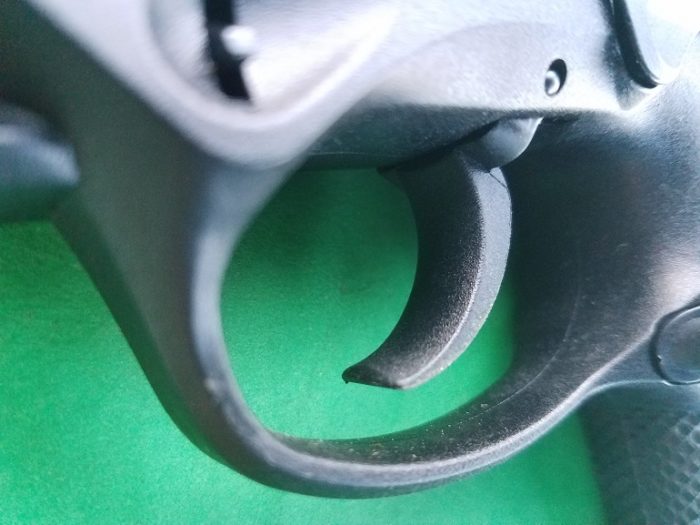
The trigger on all three version is exactly the same. The shoe is curved, smooth, and surprisingly wide. It looks a whole lot like the trigger on my Smith & Wesson Model 29. It also serves the same purpose, allowing the shooter to stroke that first double-action shot. On the stock gun, that double-action trigger is going to be close to 9lbs, but it feels much lighter than that. There’s a small amount of pause to the front of the pull, but then it’s smooth all the way to the back, with very little stack prior to the release.
But like all SA/DA guns, you’re going to have to master two different pulls to really build up speed and accuracy on the PX-4 Storm. The single action trigger breaks at 5lbs, although again, I would have bet it’s much lighter. You’ll find it has quite a bit of free travel prior to going off.
Put together, the overall experience with the PX-4 Storm trigger tells the tail of exactly why the DA/SA has made a bit of a comeback and is popular in competitive shooting again. It gives you a very fast, precision trigger. It also gives you a trigger you can stage, and start pulling before your sights are fully on the target.
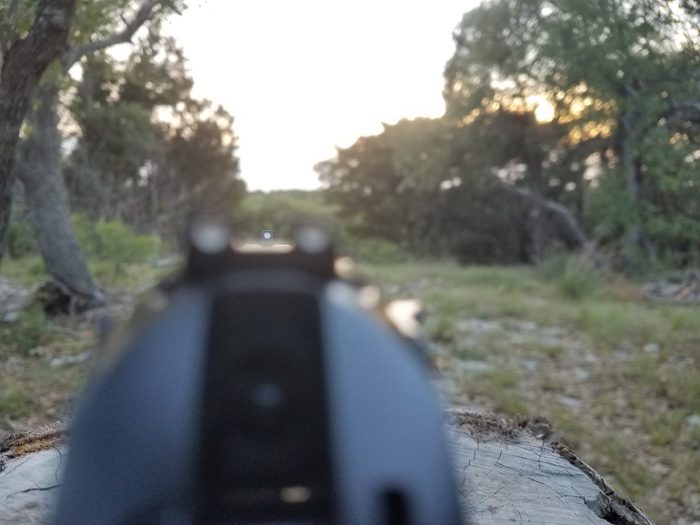
Those sights are standard drift-adjustable white three-dot sights. The front sight is fairly narrow, and provides a wide view of the target on either side of it while looking through the rear sight. I would have preferred something a little larger, and a tritium option. That’s OK, because Beretta offers exactly that, with a tritium option available from the factory.
What I really appreciate is that small flat space on the front of the rear sight. While that may not look as good the long ramp of many other sights, it’s far more functional. That little ledge can easily be used for one-handed slide manipulation, allowing you to rack the gun on a pocket, belt, boot, or object. A ledge rear sight and a bright fiber optic or tritium front sight should be considered standard on any weapon designed for law enforcement or self defense use.
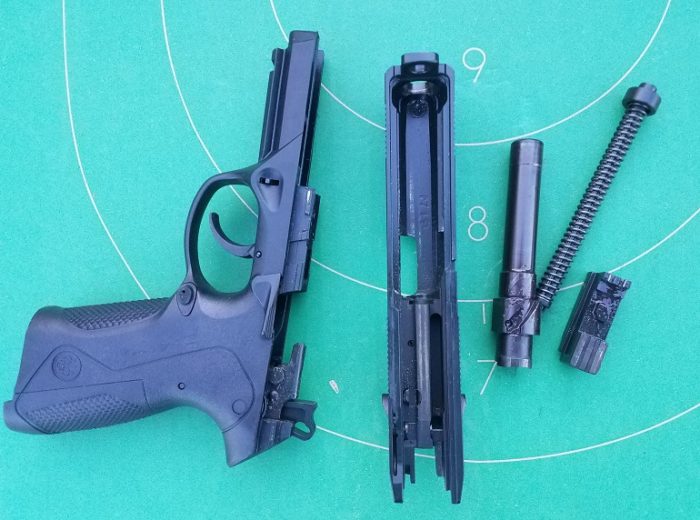
Disassembly is simple. The dual take down levers are pressed down and the slide falls forward. There’s no need to pull the trigger on the gun to safely disassemble it.
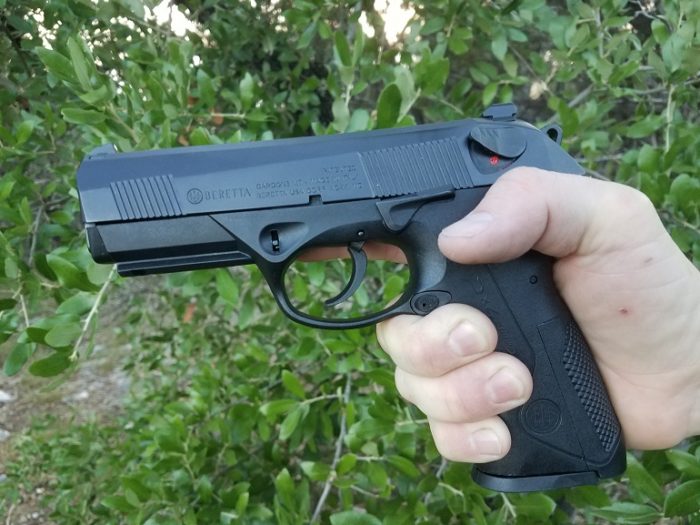
The PX4-Storm Full Size was designed as a duty gun, and its size fills that role well. I’d have no problem open carrying this gun all day in a good holster. The texture and shape of the grip let me get right on the gun from an open carry draw. That long grip will give anyone plenty of purchase.
It also makes it pretty difficult to conceal. I had the same problem with the full-size PX4 Storm as I did with the Beretta 92FS. It’s not the slide length, but the length and, more importantly, the shape of the grip that make it such a challenge to conceal. I tried OWB, IWB, and appendix carry with the full size version and found it too obvious or too uncomfortable to carry concealed.
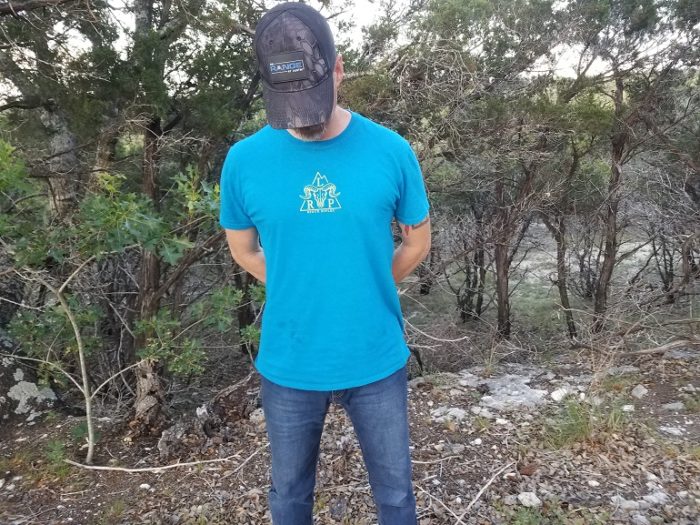
The opposite is the case for either the compact or subcompact models. Either of those hide well IWB or appendix carry. I’m carrying the compact version IWB in the above photo. Make sure you have a thick sweat guard on your holster if you choose to carry either model IWB or appendix carry. I found out first-hand that safety lever will dig into you over time.
One of the biggest complaints leveled against the Beretta 92F series is the slide-mounted safety. Lots of people just can’t get it on and off fast enough. If you have size large hands or bigger, it’s no problem. Getting it back on again, no matter how large your hands are, means a slight shift in your grip or the use of your support hand. The other complaint is that the safety is too easily engaged during reloading of the firearm, especially when under diress.
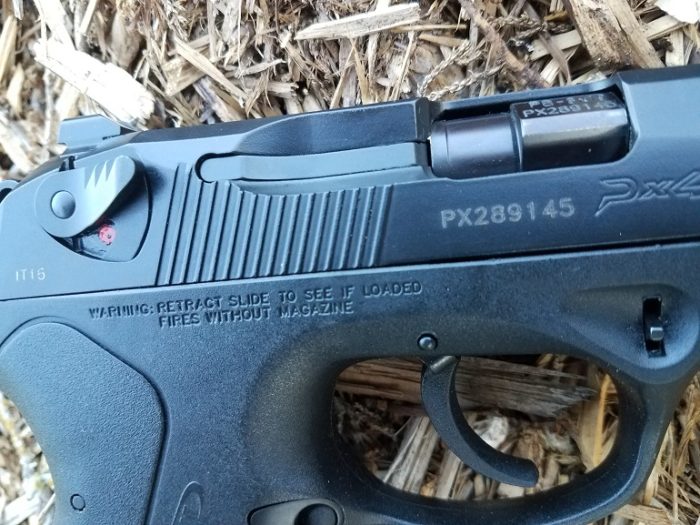
These two complaints are well founded, and to my great disappointment, were not addressed on any of the standard PX-4 Storm models. The safety is giant. It’s cut in big, sharp angles that reminded me of the steps of some Aztec Ziggurat. That means that you can get to it quickly, and that’s good. But it also means that you can inadvertently put the safety back on very easily.
That’s a pretty big problem. Because if you have to either reload or clear a malfunction under stress, and you inadvertently put the slide on, you probably wouldn’t know it until you pull the trigger and nothing happens. If you are like most folks, you will probably pull the trigger a couple of times before realizing what’s wrong. I got to see this exact problem play out with the PX-4 Storm for this review.
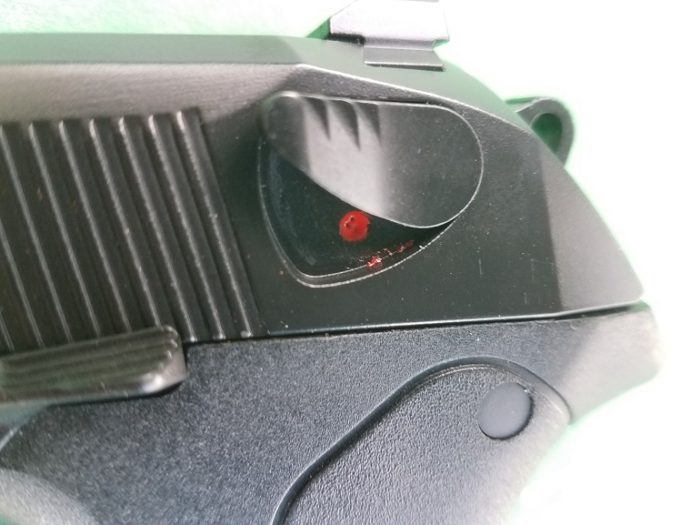
I asked our Editor in Chief, Dan Zimmerman, to feel the double action trigger of the full size PX-4 Storm. I dropped the magazine, cleared the weapon, and handed him the pistol with the slide locked back. Dan inspected the gun, dropped the slide, decocked the gun, put the safety back off, and pulled the trigger on an empty gun. Everything worked great.
He then racked the gun and allowed the slide to come back into battery in order to cock the gun and feel the single action trigger. He pulled the trigger and nothing happened. Again, nothing happened. The hammer was down and the safety was on. He had re-engaged the safety without ever feeling it when he re-racked the pistol.
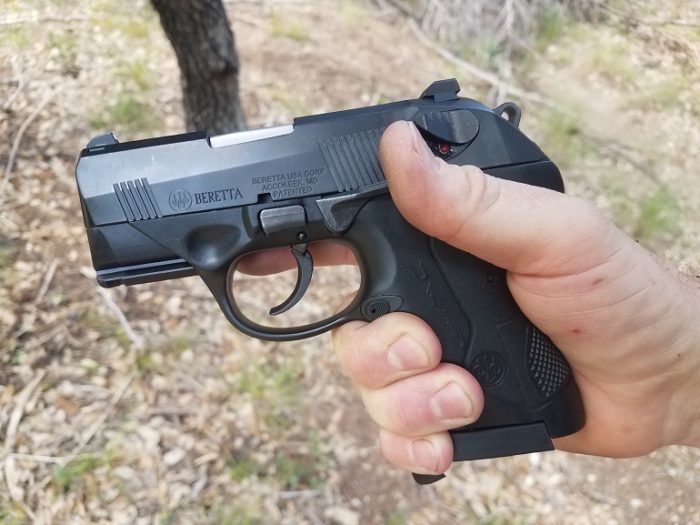
Of course, everybody knows about this issue with the Beretta 92F, which is why Beretta makes the 92G, which is a de-cock only model. Pull the safety lever down and it allows the hammer to fall safely, putting the pistol back into double action mode. And everyone knows the safety on the 92s, just like on the PX-4 Storm, is just too wide, which is why Beretta makes thinner safety levers, and gun makers like Wilson Combat will make you a flush-cut, single-sided safety like mine, which is also a G model.
Fortunately, Beretta realized all of these things for the PX-4 Storm as well, and offers, direct from Beretta, parts to make the standard model into a de-cock only model, as well as providing “stealth” safety levers that are much thinner than the standard wings.
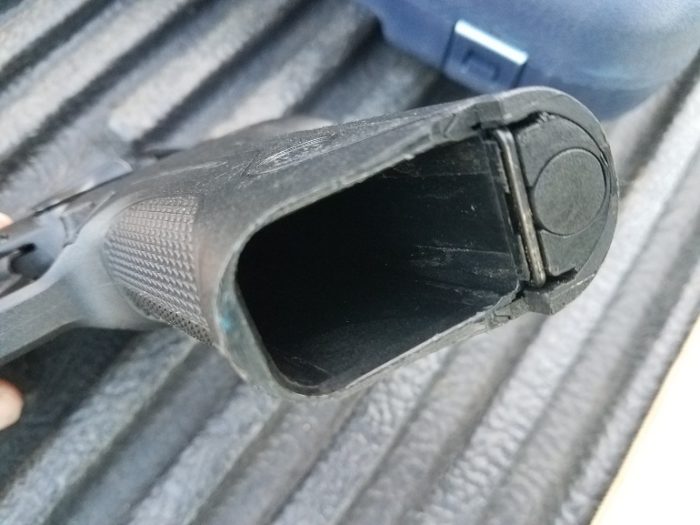
The slide release is also particularly wide. That’s nice that it’s easy to hit, but it’s just too much, and also creates a pain point for concealed carry. Just like the safety, Beretta sells a thinned, but completely functional version of this as well.
All three versions of the PX4-Storm were fairly accurate, but with a relatively wide range of scores depending on round. As a testament to the adage that “every barrel is an environment unto itself”, each of these pistols shot best with a different round. All groups were shot at 25 yards off bags over two days. All groups were five-round groups, shot four times, and averaged. Every gun shot 100 rounds for accuracy testing.
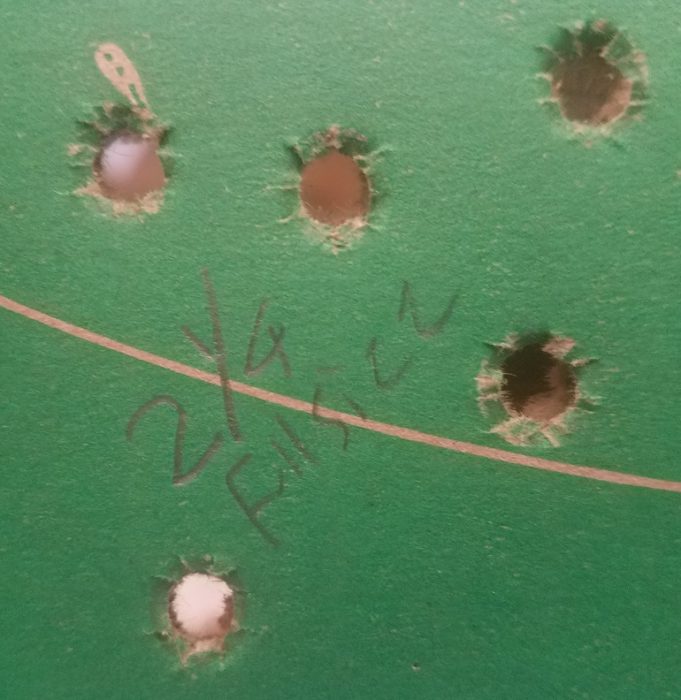
The average group size for all rounds fired for the full size version was three inches. However, there was a wide spread, primarily depending on the weight of the round. This gun shot heavier rounds better, with the best average group being the Freedom Munitions 135gr Pro Match Hollow Point, printing 2 1/4-inch groups.
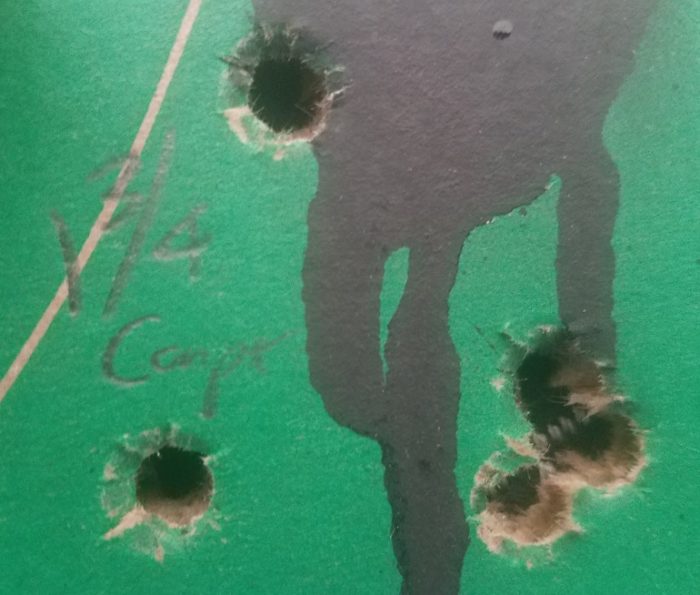
The big surprise came from the compact model. The overall average for all of the rounds was actually smaller than the full-size version, and not by a little. The average overall group size for this gun, with a shorter sight radius than the full size, was 2 1/2 inches.
The standard deviation from the different rounds was also tighter, with the exception of one outlier. This was the 115gr Hornady Action Pistol Round from Wilson Combat, which printed 1 3/4-inch groups. Of course, that’s not a common round, and one you will never see in stores. The next best performer was the Freedom Munitions X-DEF 124gr+P round at 2 1/4 inches. I wasn’t at all surprised there, as this has been the most accurate round out of several different 9mm caliber handguns I’ve reviewed.
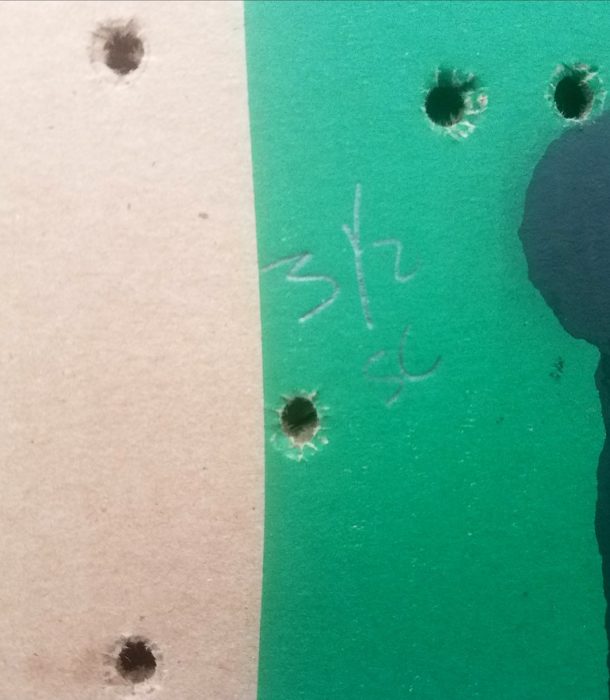
The subcompact also delivered good accuracy, printing an overall average of 4-inch groups. Like the full size version, the subcompact’s groups size varied widely by ammunition weight. For this one, the best performer was, oddly enough, plain old Winchester White Box 115gr FMJ at 3 1/2 inches.
With the exception of the combination of the Wilson Combat custom loads and the Compact PX-4 Storm, none of the guns shot any particular round amazingly well. But they all shot every round better than well enough.
Generally, smaller guns have a few drawbacks. Recoil, accuracy, and capacity being the most obvious. For these guns, the magazine capacity of even the subcompact version is still an impressive 13 rounds. So what about recoil and accuracy? Well let’s see.
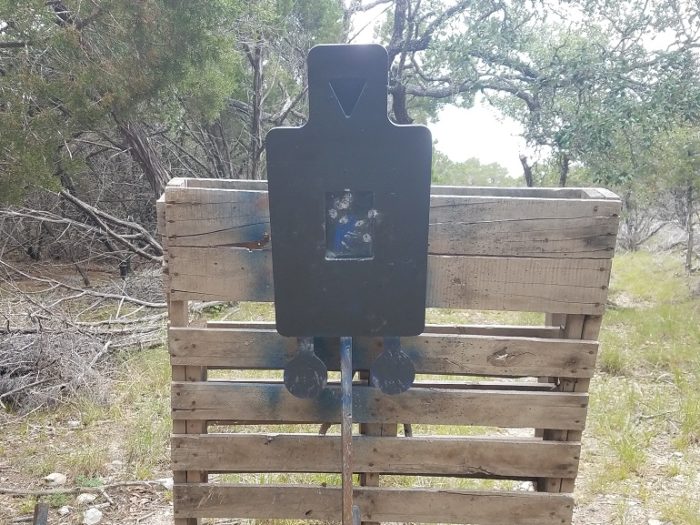
Standing at the low ready, using the Freedom 100gr Frangible rounds at 10 yards, I waited until the timer went off, and then put 5 rounds into the 4″X6″ Action Target PT Tactical Torso steel target. I did this a few times with each pistol, and then averaged the results. Any strike outside of the square added half a second, and the couple of those misses that I had were right on the edge. There were no misses of the entire target.
Just like in the accuracy test, it was actually the compact model that came out on top, with an average time of 1.99 seconds. The full size scored second, with an average time of 2.25 seconds, and the subcompact trailed with a 2.65 second score.
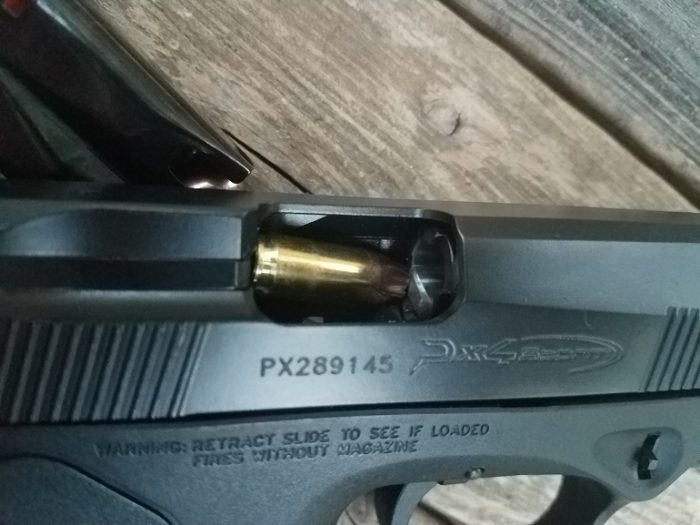
Reliability for all three pistols ranged from really really good to absolutely perfect. Like most pistol reviews, I shot 500 rounds of mixed ammunition through each gun. For this review, I shot a variety of rounds from Freedom Munitions, varying from 100 grains to 135 grains. I also shot hollow points, FMJs, and projectiles of varying types from multiple manufacturers in many different weights.
During the first 50 rounds out of the full size version, I had a few weird failures to feed. The round simply got caught fully outside of the magazine, but hit the outside edge of the barrel prior to entry. This happened with both the IWI Die cut round as well as the Freedom 100gr Frangible round.
However, after that first 50 rounds, I never had the problem again with any round, including those same rounds. I never had any issues of any kind with the either of the other two pistols. I’m chalking that initial hiccup to magazine growing pains.
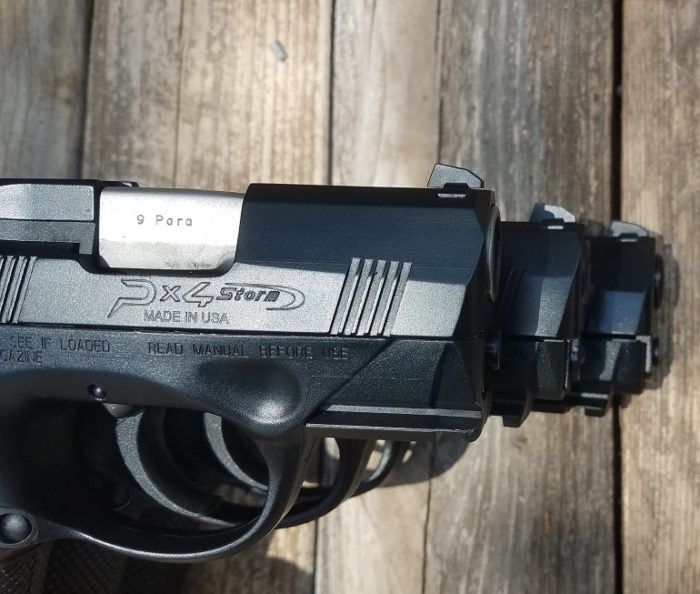
For those of you paying attention, the compact model actually outperformed — and by not a tiny margin — the other two pistols in all categories. It was faster, more accurate, and concealed well. You’ll also notice that Beretta makes replacement parts for every single one of my gripes about the gun.
Well, it turns out that Ernest Langdon realized that as well, and worked with Beretta to create their PX4-Storm Compact Carry version. It’s a compact, G-model with a slimline safety and slide lock/release and tritium sights. It also has a more heavily textured grip. That has to be the perfect version of this gun, and an excellent choice for everyday carry.
As for the stock models, they still represent a great value. The MSRP of these guns is listed at $650. That’s not bad. But if you look online, or even at your local gun store, you will likely find them selling for far under that, often for less than $500. For a gun that performs this well, that’s an easy sell. With that price, the Compact model now goes on my “must buy” list.
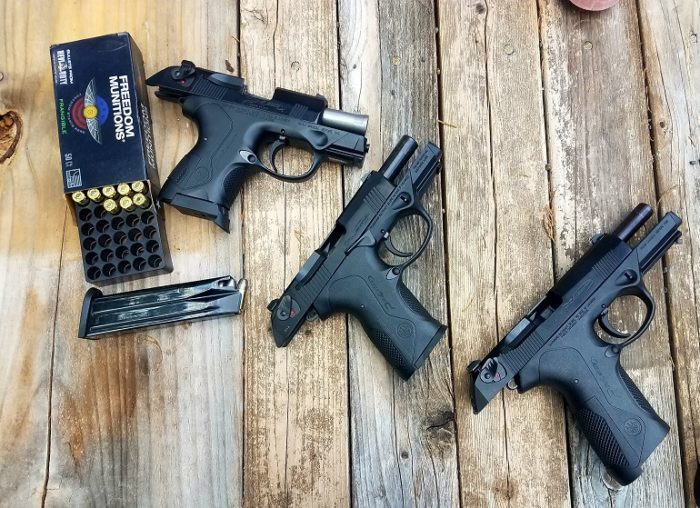
Specifications:
Beretta PX4-Storm
Full Size
Action: Single/Double
Barrel length (in): 4
Caliber: 9×19 (PARA)
Magazine: 17
Overall height(in): 5.51
Overall length(in): 7.55
Overall width(in): 1.42
Sight radius(in): 5.75
Weight unloaded(OZ):27.7
MSRP: $650 (under $500 online)
Compact
Action: Single/Double
Barrel length(in): 3.27
Caliber: 9×19(PARA)
Magazine: 15
Overall height(in): 5
Overall length(in): 6.8
Overall width(in): 1.42
Sight radius(in): 5.2
Weight unloaded(OZ): 27.2
MSRP: $650 (under $500 online)
Sub Compact
Action: Single/Double
Barrel length (in): 3
Caliber: 9×19 (PARA)
Magazine:13
Overall height (in): 4.8
Overall length (in): 6.22
Overall width (in):1.42
Sight radius (in):4.8
Weight unloaded (OZ):26.1
MSRP: $650 (under $500 online)
Ratings (out of five stars):
Style and Appearance * * *
Practical. Industrial. Kinda weird. All of the finish has been done well, and you can see Beretta’s flair for style desperately trying to get out. With that massive slide, no can do.
Customization * * * *
Pay close attention to Beretta’s website, because they offer just about everything there is to change this gun.
Reliability * * * * 9/10th
I had to take something off for one of the guns not running right during the first 50 rounds. But seriously, I’d bet my life any day on any of these guns…and yours twice as often as that.
Accuracy * * * *
With the right round, any of these guns outperform the competition. With any round, they hold their own.
Overall * * * *
These are great guns at a phenomenal price. I didn’t realize they were selling for under $500 new online. I checked and my local Academy has the full size and compact versions for $479. That is a fantastic buy. They are reliable, easily customizable, and very accurate firearms. Drop a bit of cash on a G model shaved safety. No, they aren’t pretty, at least to me. These aren’t the guns you date, these are the guns you marry.
